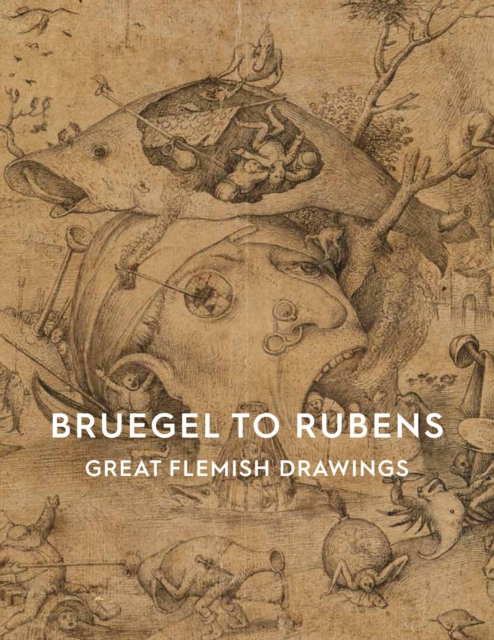- Many of the drawings coming from Antwerp are registered on the Flemish Government's Masterpieces List and will not be shown again for the next five to ten years to protect them from fading - Highlights will include a sketchbook in which a young Rubens has copied Holbein's Dance of Death woodcuts, intricate pen and ink drawings by Pieter Bruegel, meticulously drawn miniatures by Joris Hoefnagel, portrait studies by Anthony van Dyck, and a rare survival of a friendship album containing numerous drawings and poems dedicated to its owner - Two recently discovered drawings by Rubens will also be included, a design for a book-illustration on optics and an anatomical study of three legs This catalogue will accompany the Bruegel to Rubens exhibition held at the Ashmolean Museum in Oxford between 23 March and 23 June 2024. Through a selection of over 100 world-class drawings created by Flemish artists in the sixteenth and seventeenth centuries, an insightful and comprehensive overview will be given into how these drawn sheets were used as part of artistic practice, within or beyond the artist's studio. By revealing the drawings' function, rather than on their attribution or iconography, these sheets will become more fully understood through the eyes of contemporary readers. Identifying how and why these sheets were created will render these artworks more accessible to a wider audience. The three main essays will each deal with one of the principal functions of drawings at the time: studies (copies and sketches), designs for other artworks (paintings, prints, tapestries, metalwork, stained glass, sculpture and architecture), and finally the independent drawings. Each essay will discuss the relevant works within their functional context and compared with other related objects. Introductory chapters will focus on what precisely can be considered a drawing, including its materials, media and techniques, in addition to an attempt to explain the notion of Flanders and Flemish art. Emphasis will be placed throughout the catalogue on how Flemish artists collaborated in creating the most astonishing artworks of their time, unveiling their networks and friendships, as well as their travels across Europe, revealing their international importance. The exhibition is a partnership with the Museum Plantin-Moretus in Antwerp and will bring together for the first time the most stunning drawings from both the Ashmolean and the Plantin-Moretus collections, in addition to further lo




